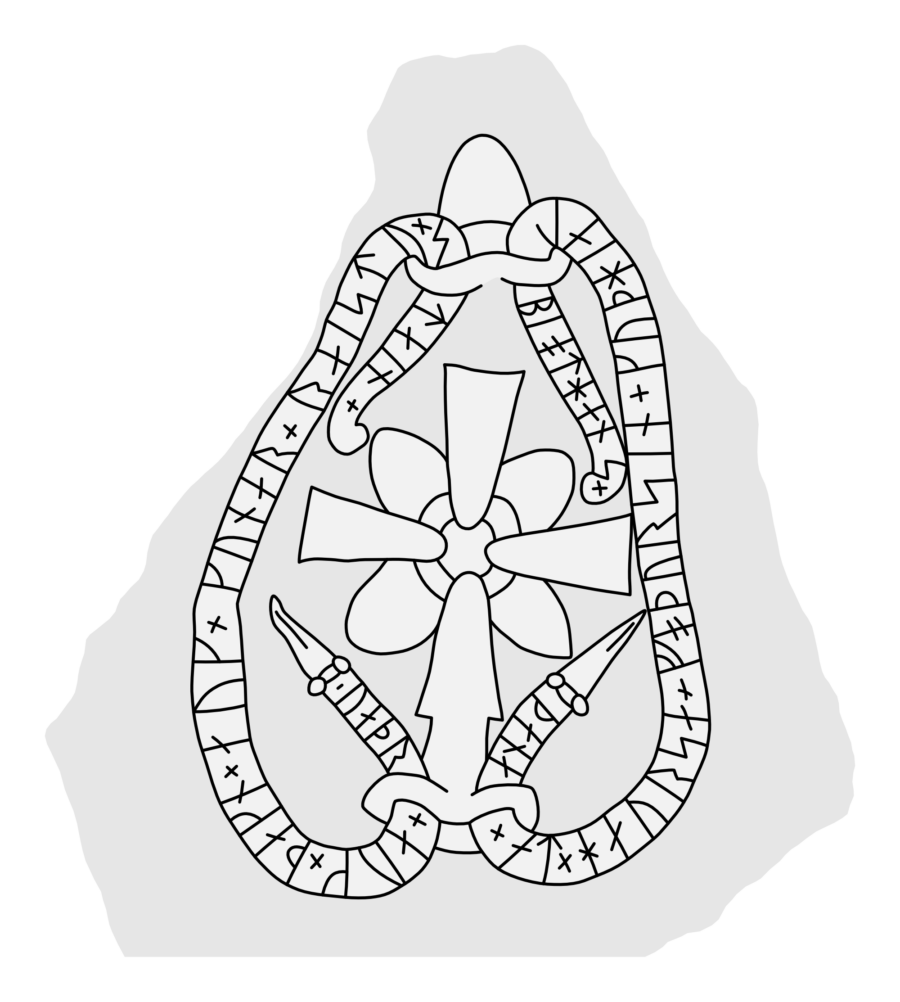
Runestone U 990
December 26, 2019
The carvings of the stone are in the runestone style B-e-v (c. 1010-1050) pertaining to the Ringerike style and contemporary with Pr 1 and Pr 2.
The inscription is not signed.
The granite stone is c. 1,50 m tall and 1,44 m wide.
Runic inscription
The first part of the rune text begins at the head end of the serpent to the left. The second part of the rune text begins at the head end of the serpent to the right.
Runes
[1] ‘ ᚢᛅᚦᚱ + ᛅᚢᚴ × ᚦᛅᚴᚾ × ᛅᚢᚴ × ᚴᚢᚾᛅᚱ × ᚱᛅᛁᛋᛏᚢ × ᛋᛏᛅᛁᚾ + [2] ᚦᛅᚾᛅ × ᛅᛏ × ᚼᛅᚢᚱᛋᛅ × ᚠᚯᚦᚢᚱ ᛋᛁᚾ + ᚴᚢᚦ ᚼᛁᛅᛚᛒᛁ ᚯᛏ ᚼᛅᚾᛋ ×
Transliteration
‘ uaþr + auk × þakn × auk × kunar + raistu × stain + þana × at × haursa × foþur sin + kuþ hialbi ot hans ×
Old Norse
Veðr ok Þegn ok Gunnarr ræistu stæin þenna at Haursa, faður sinn. Guð hialpi and hans.
English
Veðr and Thegn and Gunnarr raised this stone in memory of Haursi, their father. May God help his spirit.
Notes
Veðr and Thegn are also mentioned on U 937 and 991. Veðr is the only one known by this name in any sources.
U 990 is one in a series of runestones raised by members of the same family across three generations within the span of c. 50 years. They are, in chronological order:
- U 999 Raised in memory of Thegn by his sons Haursi and Ketill.
- U 990 Raised in memory of Haursi by his sons Veðr and Thegn.
- U 937 and U 991 Raised in memory of Veðr by his brothers Haursi and Gunnarr.
Similar to the Jarlabanke runestones, U 990, U 991, U 992 and probably also U 937 were part of a ‘bridge monument’ near a bridge which gave Broby (meaning ‘bridge town’) its name.
———
Broby, Uppland, Sweden
U 990